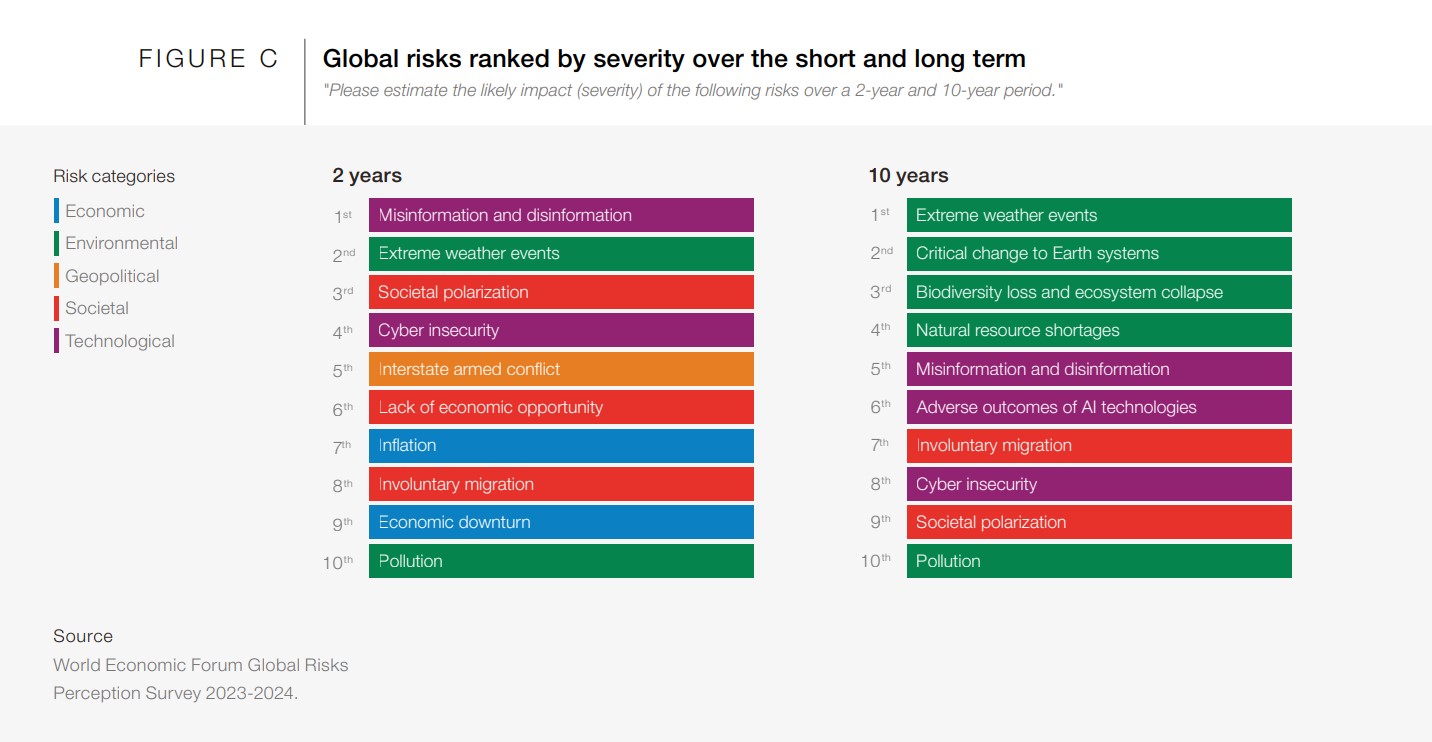
Innovation culture
Keeping a pulse on current and emerging trends helps us navigate the potential impacts and opportunities for our clients and our firm.

Leaders from around the world gathered again for the World Economic Forum (WEF) 2024 Davos annual meeting to discuss the world’s biggest challenges. The meeting highlighted topics such as AI and sustainability and explored how collaboration is needed to make positive progress. Discover more about these key topics and what they mean for your organization.
For an overview of the conference and last year’s key takeaways, explore the World Economic Forum Davos 2023 annual meeting highlights.
At this year’s meeting, "Artificial intelligence as a driving force for the economy and society" was one of four central themes. Notably, leaders from top global companies offered insights on generative AI’s (genAI) future impact on work and the need to ethically transition its influence on the economy and society. But what stood out?
The rapid development of genAI is beginning to transform the landscape of work. According to the WEF’s Jobs of Tomorrow white paper with Accenture, approximately 40% of working hours could be automated by large language models (LLMs) [1]. As Arvind Krishna, CEO and Chairman of IBM, states, “It is the first technology that goes after the white-collar work or what I will call the lower half of cognitive work.” Julie Sweet, CEO of Accenture, further emphasizes, “AI will create a lot of new jobs, but you won’t be able to take the current people and put them in the jobs unless you partner together…on reskilling.” As outlined in the WEF’s Future Jobs report, the top five skills essential for navigating the AI era over the next five years are:
These skills underscore the consensus among leaders regarding “adaptation” as a fundamental pillar of success for organizations and individuals amid the impending AI revolution.
From a societal standpoint, there is a growing concern about balancing the adoption of AI with its carbon footprint. As George Oliver, CEO of Johnson Controls, states, “Through AI and innovation, organizations are transforming the way we solve the climate crisis, radically changing the way we design, deliver and deploy the things that humans create – buildings, infrastructure, machinery, consumer products and more.” However, assessing the cost-benefit of AI deployment for transformative insights requires large amounts of data and computational energy. Samuel Burd, President of Dell Technologies, emphasizes, “Data is essential to the learning and decision-making capabilities of AI and, as such, demand on data processing is expected to grow significantly.” This surge in data processing demand will inevitably contribute to a larger carbon footprint. Accordingly, leaders agree that striking a delicate balance between reaping the benefits of AI and mitigating its environmental impacts will be paramount. Initiatives such as the WEF’s AI Governance Alliance, which unites global stakeholders across sectors to ensure AI advances ethically and sustainably for society’s betterment, will be important in an AI-driven future.
Building upon previous years’ discussions, climate, nature and energy were again prevalent in this year’s sessions, including the overlap with other key themes such as AI. Like last year, environmental challenges make up half of the top ten risks anticipated in the next ten years, according to the WEF 2024 risk report [3]. As a result, leaders called for a sense of urgency and direct action to take on these challenges.

Many discussions focused on ways to implement a long-term strategy to achieve objectives for a “carbon-neutral, nature-positive world by 2050 while providing affordable, secure and inclusive access to energy, food and water” – much of which centered around leveraging technology and AI and the importance of working together. Achieving these goals will require upskilling the workforce, a continued push for transitioning to “green” energy and infrastructure and collaboration.
It’s an age-old adage, “two minds are better than one.” This holds as another key theme throughout the conference – a call for leaders to pull together and collaborate to regain trust and solve our biggest problems. This was prevalent across many topics, from the more prominent global conflicts and security issues to the targeted responses in AI governance and the climate crisis. Collaboration will be critical to solving the major risks and challenges we face and, therefore, must extend beyond geographies, sectors and competition.
Intra-industry alliances are becoming more popular as organizations seek ways to reduce costs and team up to innovate. For example, Pepsi and Coca-Cola are working together to solve common industry issues such as regenerative agriculture and water supplies.
As AI continues to impact industries, one thing remains certain: the intersection of AI, our method of work and the prospects of sustainability will continue to spark important questions. Preparing for these possibilities is crucial, offering a clear pathway toward a future anchored in technological advancement and human-centric guidance. Prepare today by:
With a proactive approach that embraces these key takeaways, organizations can position themselves to navigate the evolving AI landscape and drive positive outcomes.

Keeping a pulse on current and emerging trends helps us navigate the potential impacts and opportunities for our clients and our firm.



WEF Davos annual meeting offers a glimpse into key topics that may affect organizations in the near future. Topics ranged from the climate and energy crisis, emerging technologies and predictions for the global recession and the future of work.
References